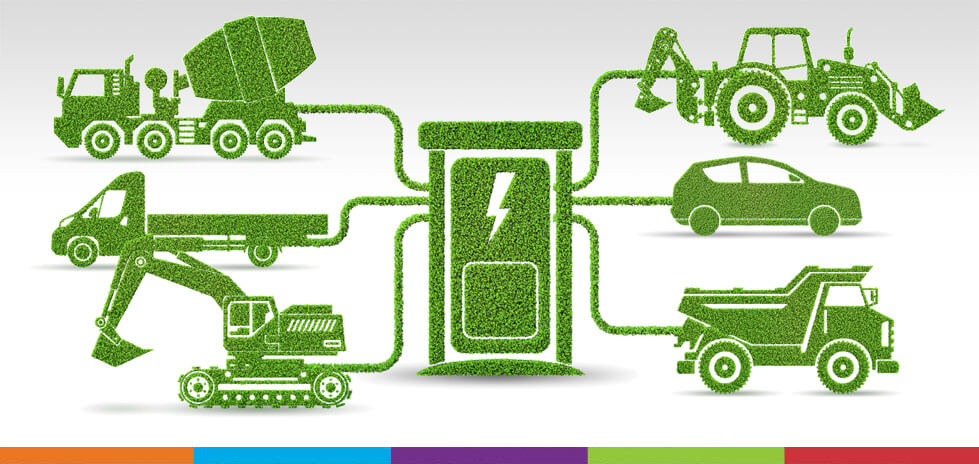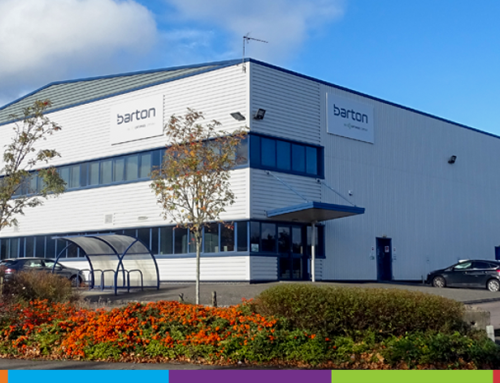
3 Sustainable Manufacturing Opportunities for OEMs
What Does the UK’s Zero Emissions Target Mean for the Construction Industry?
In November 2020, the Prime Minister announced the government’s “Ten Point Plan for a Green Industrial Revolution.” This plan lays out the policies and actions to reach a UK net-zero emissions target by 2050.
What does this mean for construction OEMs? While global CO2 emissions fell 10% from construction sources during the pandemic, they’re picking up now that the economy is churning again.
Finding ways to carry out sustainable manufacturing — including sourcing locally made fasteners, choosing environmentally friendly manufacturing methods, and using reusable packaging for shipping — will creep up the priority list for OEMs and become a differentiating factor.
What Does the UK’s Net-Zero Emissions Target Mean for OEMs?
Since publishing the 2020 report, which describes the need for all actors along the value chain to increase their decarbonisation efforts, the government expects more from businesses. In October 2021, a new report debuted and detailed the policies needed to achieve net zero by 2050. The implications for OEMs include:
- Bigger Expectations: Both government expectations and consumer opinions are provoking industry research and development. Fifty-six per cent of UK residents say they support total decarbonisation. OEMs are turning their attention to finding ways to design zero-emission construction equipment, increase supply chain transparency, and implement policies that will edge them towards their net-zero emissions target.
- Across-the-Board Sustainability Changes: Sustainable manufacturing will impact OEMs across all parts of their supply chains and production lines. Manufacturers must show their commitment to making sustainable construction equipment a reality through design, product selection, and construction processes.
- Business Model Changes: To better serve government policy and the ability to deliver sustainable projects, OEMs will need to shift their business models. According to one report, reaching net-zero emissions will require a new approach involving rethinking how we measure value.
This is complex work, though, and with regulations and aims everchanging, OEMs need to find partners that can identify the gaps in their processes.
Sustainable Manufacturing Opportunities OEMs Should Consider
The first challenge for those in construction manufacturing looking to make sustainable changes is identifying opportunities. We can help you with that. Here are three ways that OEMs can start working toward their net-zero targets:
1. Low-Carbon Transportation
The electrification of construction vehicles will represent a big wave of sustainable manufacturing in the construction industry. There will likely be financial incentives and tax reductions for people working on this effort, too, because of the impact vehicles have on the carbon footprint of the whole industry.
There are challenges to low-carbon transportation in construction, though. Heavy mobile machinery is unlikely to move from diesel in the near future, and electric vehicles need a lot of supporting equipment that must be developed, designed, and made affordable. Construction vehicle manufacturers who are up for the challenge have a lot to win.
2. New Manufacturing Partnerships
Sustainable manufacturing is the construction industry’s future, but knowing how to initiate this transformation is a huge challenge. While companies feel the pressure to renovate their processes and supply chains, they need knowledgeable partners who can help bring issues into focus and streamline operations.
Manufacturing partners have expertise and can shed light on changing legislation to help companies innovate while staying within regulations and making good renewable choices. The cost of making a sustainable supply chain can also be intimidating, and a partner will help break it down.
3. Parts Analysis
Construction vehicles comprise of many parts and fasteners, and the manufacture of these tiny but vital parts could be a significant opportunity to reduce emissions in the OEM process. Engineering fasteners for electrification production will require in-depth analysis of materials, durability, weight, and charge. If we can evolve our fasteners to be more versatile, smaller, and lighter, we’ll have a much better chance of developing whole construction vehicles that use renewable energies.
The government and the public pressure will inspire all industries to head boldly toward net-zero emissions by 2050. The reality of this effort is challenging, but if OEMs can tap into the areas of opportunity that exist in the construction industry, they can find their own way to sustainable manufacturing practices.






